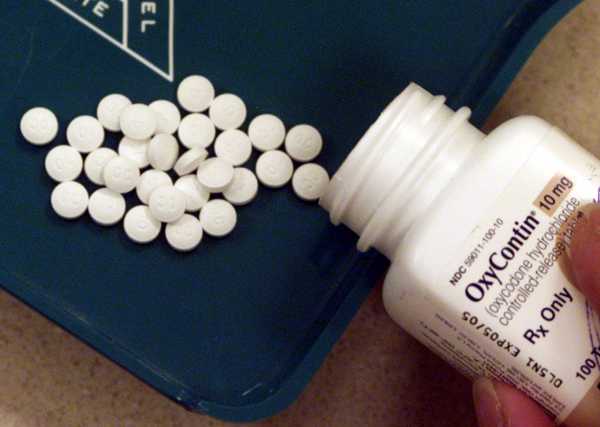
If you want to know how the opioid epidemic got so out of control, it’s hard to do better than this statistic: Between 2006 and 2016, out-of-state drug companies shipped nearly 21 million opioid painkillers to two pharmacies in Williamson, West Virginia, population 2,900.
That comes from a report by Eric Eyre at the Charleston Gazette-Mail, citing a new congressional investigation into massive shipments of the opioid painkillers oxycodone and hydrocodone in West Virginia by drug wholesalers Miami-Luken and H.D. Smith.
Previously, Eyre had found in an award-winning investigation that from 2007 to 2012, drug firms poured a total of 780 million painkillers into the state — which has a total population of about 1.8 million. The small town of Kermit had a population of 392, but a single pharmacy there received 9 million hydrocodone pills over two years from out-of-state drug companies.
We know the consequences. West Virginia suffered by far the highest drug overdose death rate out of any state in 2016, the latest year with full data. The state’s overdose death rate was 48.3 per 100,000 people that year, according to the Centers for Disease Control and Prevention. In comparison, the state’s homicide rate in 2016 was 5.9 per 100,000, and its rate of fatal car crashes was 15.
The opioid epidemic goes back to the 1990s, with the release of OxyContin and mass marketing of prescription painkillers, as well as campaigns like “Pain as the Fifth Vital Sign” that pushed doctors to treat pain as a serious medical problem.
Doctors subsequently prescribed opioids in droves, leading to a proliferation of pills that eventually ended up not just with patients but also teens rummaging through their parents’ medicine cabinets, other family and friends of patients, and the black market.
This contributed to the spread of opioid painkiller misuse and addiction, which over time also led to greater misuse of illicitly produced opioids like heroin and fentanyl. Drug overdose deaths have climbed every year since the late ’90s as a result.
In 2016, there were nearly 64,000 drug overdose deaths in the US — an all-time high — and at least two-thirds were linked to opioids. The rise in drug overdose deaths was a big reason that life expectancy fell for the second year in a row in the US, which had not happened since the early 1960s.
The early data suggests that 2017 was worse: According to preliminary figures from the Centers for Disease Control and Prevention, there were nearly 67,000 drug overdose deaths in the 12-month period through June 2017, up from more than 57,000 in the 12-month period through June 2016.
The issue has really turned into two simultaneous crises — which Keith Humphreys, a Stanford University drug policy expert, has described as the dual problems of “stock” and “flow.”
On one hand, you have the current stock of opioid users who are addicted; the people in this population need treatment or they will simply find other, potentially deadlier opioids to use if they lose access to prescribed painkillers. On the other hand, you have to stop new generations of potential drug users from accessing and misusing opioids, including painkillers.
Addressing these crises will, experts say, require tens of billions of dollars.
As I previously explained, we have a pretty good idea of what those resources should go to: They could be used to boost access to treatment (particularly highly effective medications for opioid addiction), pull back lax access to opioid painkillers while keeping them accessible to patients who truly need them, and adopt harm reduction policies that mitigate the damage caused by opioids and other drugs.
Until the country does that, it can expect more and more overdose deaths.
For more on the opioid epidemic, read Vox’s explainer.
Sourse: vox.com






